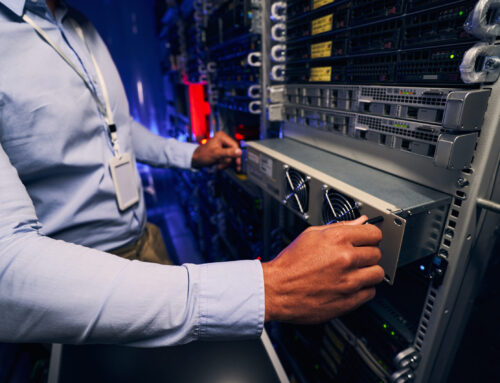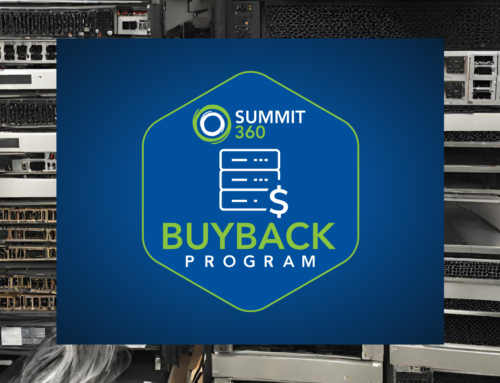From small startups to large corporations, the demand for high-performing technology continues to grow. IT professionals face the critical task of ensuring that their company’s technological infrastructure can keep pace with industry demands while managing costs effectively. In this article, we’ll explore the benefits and considerations of using both new and refurbished IT equipment, providing a comprehensive guide to enhancing performance and cost efficiency in your organization.
The Growing Importance of IT Equipment in Business Operations
IT equipment is no longer a luxury; it’s a necessity for businesses aiming to compete in the modern market. From facilitating communication to enabling advanced data analysis, IT systems are the engines that drive productivity and innovation. The right equipment can significantly influence a company’s ability to deliver services efficiently, respond to market changes, and maintain a competitive edge.
The advent of technologies such as cloud computing, AI, and IoT has heightened the need for robust IT infrastructures. Companies must ensure their systems are agile and scalable to adapt swiftly to technological advancements. For this reason, investing in the right IT equipment has never been more crucial for achieving business success.
However, the challenge lies not just in acquiring the latest technology but in balancing performance with budget constraints. Here is where understanding the nuances between new and refurbished IT equipment becomes vital for IT professionals tasked with optimizing their organization’s technology mix.
Understanding New vs. Refurbished IT Equipment
The decision between new and refurbished IT equipment often hinges on quality, performance, and cost considerations. Each option presents its own set of advantages and potential drawbacks that IT professionals must weigh carefully.
New IT equipment typically offers the latest features and advancements in technology. It comes with manufacturer warranties, ensuring peace of mind regarding reliability and support. However, the cost of new devices can be prohibitive, especially for smaller companies or those with limited budgets. High upfront expenses can strain financial resources, leaving less room for other important investments.
On the other hand, refurbished IT equipment provides a cost-effective alternative without necessarily sacrificing performance. These devices have been restored to their original condition and tested to meet quality standards. While they may not possess cutting-edge features, refurbished equipment often delivers comparable results at a fraction of the price.
Ultimately, the choice between new and refurbished equipment should be guided by an organization’s specific needs, goals, and financial constraints. Understanding the differences in quality, performance, and cost can empower IT professionals to make informed decisions that align with their strategic objectives.
Benefits of Refurbished IT Equipment
Refurbished IT equipment offers several compelling advantages that make it an attractive option for many organizations. One of the most significant benefits is cost savings. By opting for refurbished devices, businesses can reduce their IT expenditures significantly. This enables them to allocate resources to other critical areas, such as software development or employee training, thus fostering overall growth.
Sustainability is another key advantage of choosing refurbished equipment. Extending the lifecycle of technology reduces electronic waste and helps conserve valuable resources. For environmentally conscious companies and those striving to meet sustainability goals, incorporating refurbished devices into their IT strategy aligns with their values while supporting responsible consumption.
Additionally, refurbished equipment often offers greater upgradability and flexibility. Many refurbished devices are compatible with various system configurations, allowing IT professionals to tailor them to their specific requirements easily. This adaptability can be particularly beneficial for organizations with dynamic needs, enabling them to adjust their infrastructure seamlessly as demands evolve.
Best Practices for Sourcing and Integrating New and Refurbished Equipment
Successfully sourcing and integrating new and refurbished IT equipment involves a strategic approach. IT professionals must employ best practices to ensure they maximize the benefits of each option while minimizing potential challenges.
Start by thoroughly assessing your organization’s unique needs and objectives. Consider factors such as performance requirements, budget constraints, and scalability. This evaluation will serve as the foundation for your equipment selection process, ensuring alignment with your overall IT strategy.
When sourcing refurbished equipment, partner with reputable vendors who provide high quality refurbished devices and warranties. Look for suppliers with strong customer reviews and a track record of delivering high-quality products. Thoroughly inspect and test refurbished equipment upon receipt to verify its condition and functionality.
Integrating new and refurbished equipment requires careful planning and execution. Develop a comprehensive implementation plan that outlines tasks, timelines, and roles. Ensure compatibility between devices and existing systems to prevent disruptions during the transition. Regular maintenance and monitoring are essential to optimize performance and extend the lifespan of all equipment in your infrastructure.
Future Trends in the IT Landscape
The role of refurbished equipment in the evolving IT landscape is expected to grow as businesses continue to seek cost-effective solutions. With increasing environmental awareness and the need for sustainable practices, more organizations are likely to incorporate refurbished devices into their strategies.
Emerging technologies such as edge computing and AI-driven analytics will influence the types of equipment businesses require. Refurbished equipment vendors may adapt by offering specialized products that cater to these trends, providing additional opportunities for IT professionals to enhance their infrastructure with tailored solutions.
Furthermore, advancements in refurbishment processes and quality assurance will likely improve the reliability and performance of refurbished devices. This evolution will further solidify their place within the IT landscape as viable alternatives to new equipment.
Leveraging new and refurbished IT equipment offers IT professionals a powerful combination for maximizing performance and cost efficiency. By understanding the distinctions between these options and employing best practices for sourcing and integration, organizations can build robust infrastructures capable of driving business success.
The future of IT will see continued innovation and transformation. By staying informed of emerging trends and maintaining flexibility in equipment choices, IT professionals can position their organizations to thrive in an increasingly competitive environment.
Are you ready to explore the possibilities of integrating refurbished equipment into your IT strategy? Discover how Summit 360’s solutions can help you achieve your goals by
contacting us today for more information!




